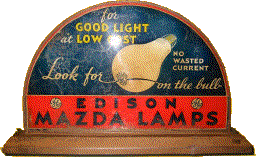
Tallahassee, July 2003
Heater Core Bypass
June 2003

Tallahassee, July 2003
Heater Core Bypass
June 2003
| My '90 Miata, and many others
I've been told, wants to cook the driver's right foot--on 90* days with
the sun overhead and the top down I have literally felt my it starting to
approach well done. I've read
of and tried a number of fixes ranging from installing insulation under the
carpet around the drive tunnel, to adding a foam core to the firewall/hood
seal; but none of these fixed the problem.
So, armed with a recently acquired infrared thermometer I tracked down part of the problem, the fact that in the Miata as in most modern cars the coolant flow through the radiator core is constant and its flow is directed through or around the core to control heat to the cabin. This means that even if you have set the temperature control to cold, there is still a big 200+ degree ball of brass sitting 6 inches from your foot--the radiant heat from the heater box is substantial. I have measured the heater box at over 180* after driving the car for an hour or so at highway speeds. NOTE: The coolant flow from the back of the cylinder head, through the heater core, and back into the water pump is essential to the proper cooling of the Miata engine--you should not simply block off the flow through the heater core, as this will cause the rear end of the engine to run extremely hot!!! Last Summer I drained the system and bypassed the heater core to eliminate this radiant heat. This worked very well, still kind of warm on hot days but quite bearable. In late Fall I drained it again and reconnected the heater. I was going to make this a Spring/Winter ritual, however it occurred to me that a 3-way valve could be used to shuttle the flow either through the heater core or bypassing same as conditions warrant--that's what I set out to do. NOTE: I do not consider this rig to be representative of my finest hours--it works and doesn't leak, but it isn't real pretty... |
|||
| The first
and second photos show, as best as I could
get at it, what the finished spider web of
hoses, elbows, valve, and a tee look like ( I told you it wasn't pretty). The
fourth thumbnail
links
to a .PDF file showing a schematic diagram
of the reroute (I do mostly electronic/electromechanical design, so that's
the tool I used to make the schematic). The valve is a Conbraco 70-603-10 1/2" NPTF (female) 3-way ball
valve ($13.13 from www.GoMarine.com).
They also sell 90* 1/2" NPTM X 5/8" hose barbs for $6.08 each,
but being cheap I got 1/2" NPT street ells and 1/2" x 5/8"
hose barbs from Ace Hardware for $3.10 for each set (3)--these are used to
get coolant into and out of the valve.
I also used brass/bronze barb type elbows and a tee that I got from Lowes in Jacksonville. They are PEX (Poly EXpanded Styrene) fittings. PEX is a plastic piping system often used in mobile homes--you can get this stuff online at www.pexconnection.com. These are actually called 1/2" fittings, however that's the I.D. of the fitting, so their a great match for 5/8" I.D. heater hose. They also have 90* NPTM x 1/2" barb adapters too (Lowes does not stock these), all very reasonable--cheaper than Ace or Lowes. While at Lowes I also bought a bag of about a million (or 12) hose clamps for $5. I had to cut 1-1/4" or so off the valve handle to make it clear the 90* outlet, the valve mounting bracket is 1/8" x 3/4" aluminum flat stock drilled, twisted, and bent as needed--it mounts to the valve's built-in ears with 8-32 machine screws, and to the shelf under the master cylinder with an M6 bolt and an existing captive nut. The third photo shows what the valve assembly looked like before final assembly, and before hacking off the control lever. Make sure you use some type of thread sealant that can handle the heat--I prefer the Teflon paste. For hoses I visited the local Autozone where I am a "regular", this gets me special privileges like being able to go to the back and measure heater hose to get a couple of preformed hoses that had the twists and bends I thought I'd need. This wasn't cheap, I paid $17 for the two hoses I ended up with. So, there it is--I've got about $45 in it, arguably a lot to save having the drain the system and reroute a couple of hoses twice a year. However come Fall (late Fall here in Florida) all I'll have to do is throw the valve to the other position and there will be heat. A side benefit of this is that because I'm only blocking flow through the heater core it's still pressurized and wet--normally wet things seem to do better when they are no allowed to dry out. |
|||
Return/Goto My Miata Home Page

Persian mythology gave the name Ahura Mazda
to the god of light...
cliffyk@paladinmicro.com